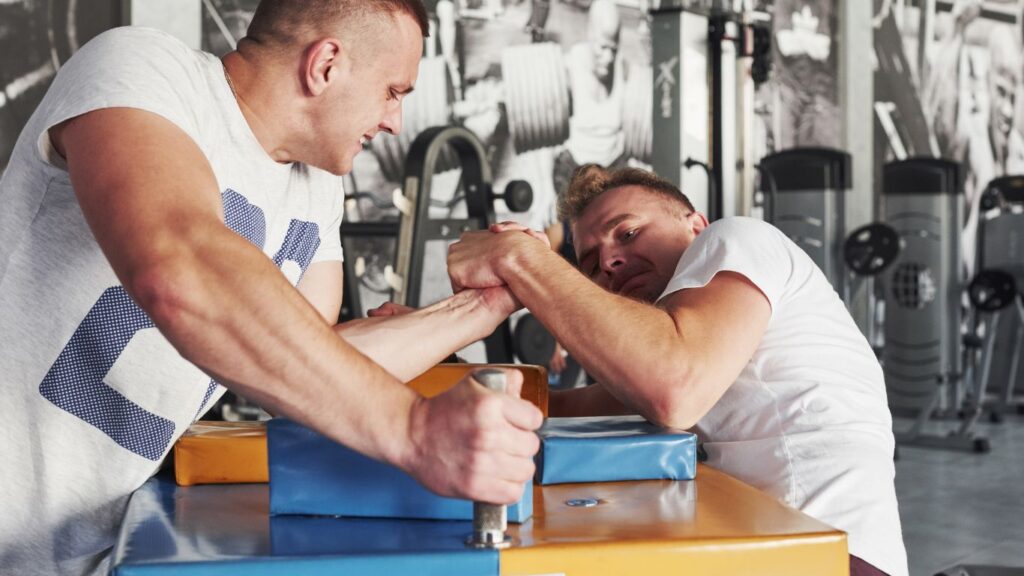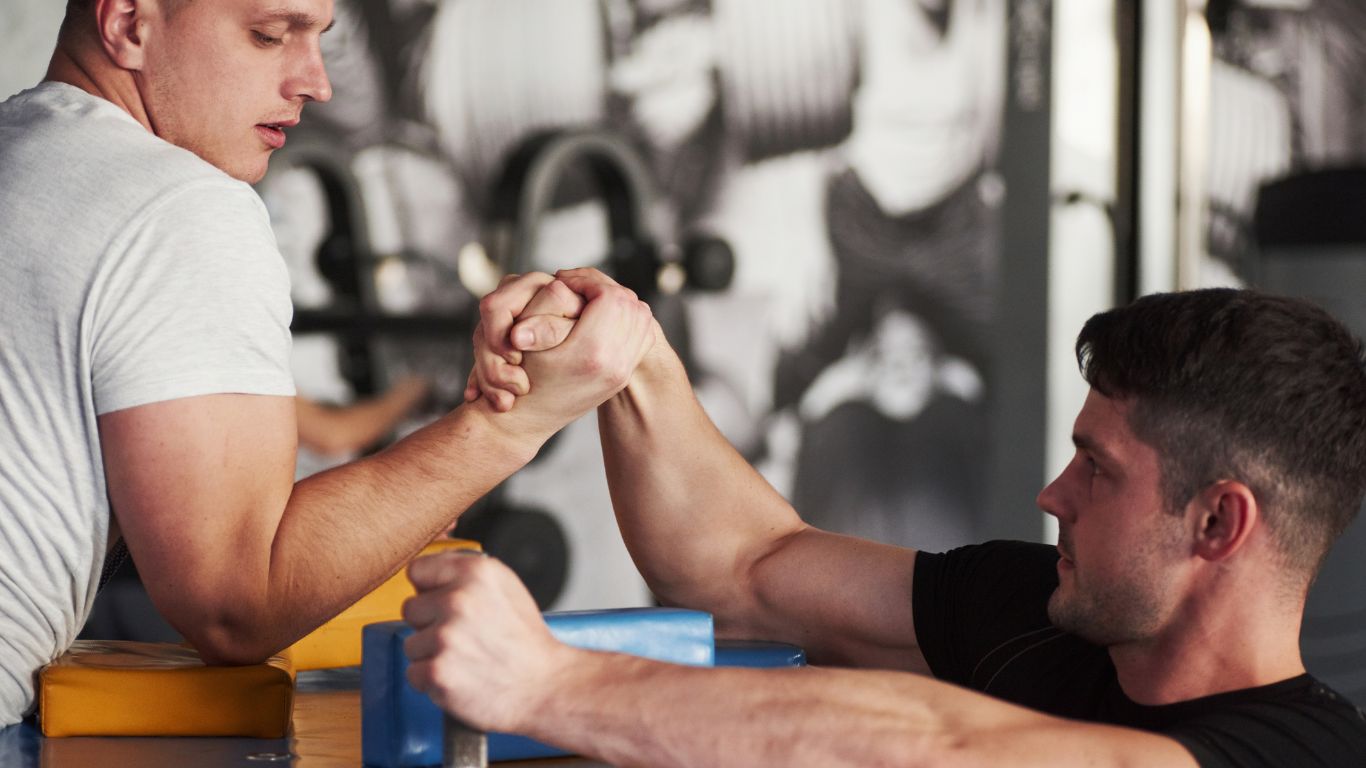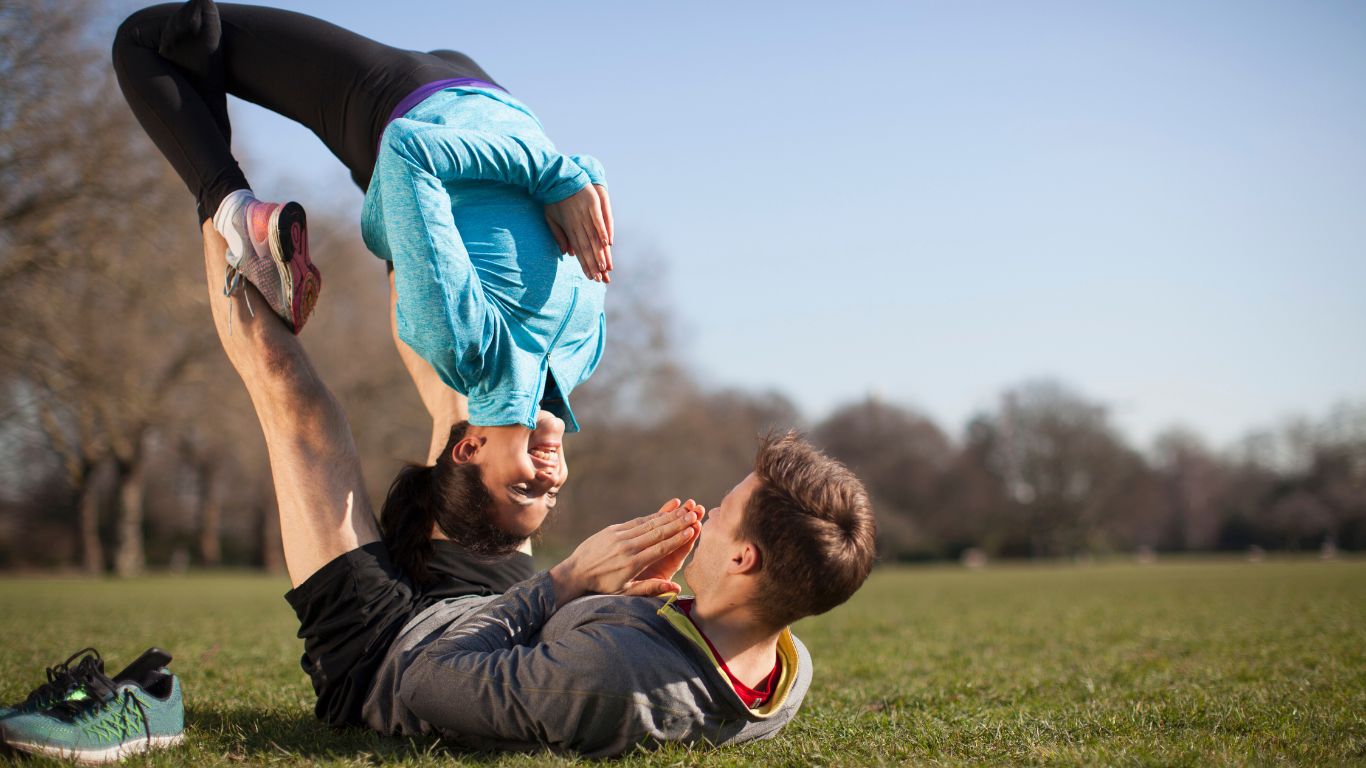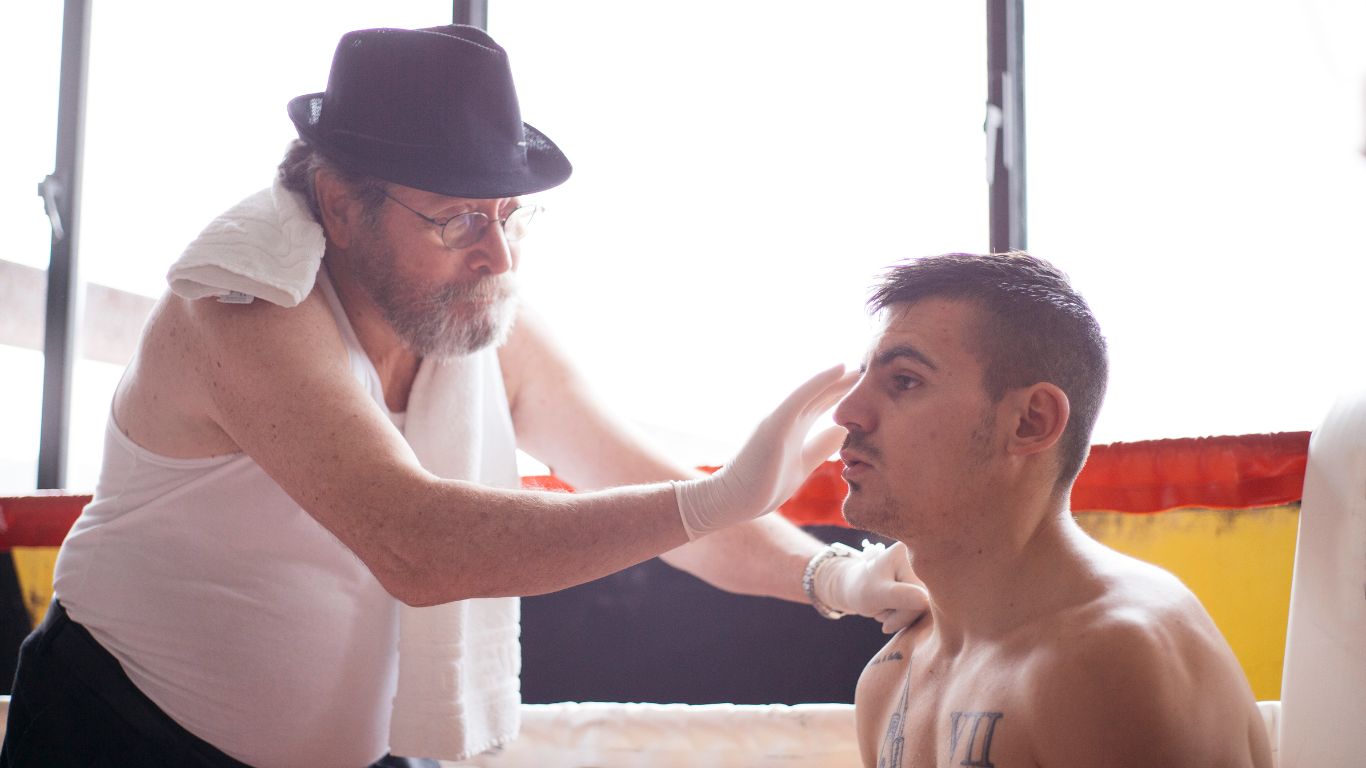The Underestimated Power of Your Forearm
In sports, arm wrestling often takes a backseat to its more flamboyant and illustrious siblings, like traditional wrestling or boxing. People usually assume that arm wrestling requires nothing more than raw, unadulterated strength, and starters in the sport can quickly find out that a powerful grip and forearm are paramount to standing out among the crowd. However, there’s a method to the madness of arm wrestling, and a series of exercises can help transform a beginner into a formidable adversary at the table.

The Science of Strength
Before you begin these arm wrestling exercises, it’s essential to understand the biomechanics involved. Arminvolved. Arm wrestling primarily engages the upper body’s muscles, specifically the biceps, triceps, and, perhaps most importantly, the forearm flexors and extensors. Each muscle group is crucial in the match, from the initial pull to the grinding stalemate and eventual throw.
It’s important to note that arm wrestling is a sport in which technique can often triumph over sheer strength. By focusing on the muscles and movements specific to arm wrestling, you can drastically improve your game regardless of your starting point.
Exercises for Forearm Strength and Endurance
Wrist Curls
Wrist curls are a fundamental exercise to develop the forearm flexors, the muscles responsible for driving the hand down to the table. You can use various tools to perform this exercise, from a simple dumbbell to a barbell or even a specialized wrist roller. In its most basic form:
- Sit on a bench or chair with your forearm flat on your leg, palms facing upwards, and your wrist hanging over the edge.
- Lift the weight by bending your wrist upward towards you.
- Slowly lower the weight back to the starting position.
For variation and a more comprehensive workout, you can perform reverse wrist curls, which more effectively target the forearm extensors.
Hammer Curls
Hammer curls are an excellent compound exercise working the brachial radialis, a powerful muscle in the forearm. To perform:
- Stand with your feet shoulder-width apart, holding a dumbbell in each hand along your sides, with a neutral grip (palms facing your body).
- Keeping your upper arms stationary, bend at the elbow to curl the weights upwards toward your shoulders.
- Lower the weights back down to the starting position and repeat.
This exercise will build the strength of your forearms and biceps, making it a great two-in-one movement for arm wrestling training.
Finger Holds
Directly strengthening the fingers is a less common but highly effective method to improve grip strength. One variation that is particularly relevant to arm wrestling involves the use of a weighted bucket. Here’s how to execute finger holds:
- Fill a bucket with weightlifting plates or heavy household items and place your fingers under the handle.
- Slowly lift the bucket off the ground, allowing the weight to be supported by your fingers and forearms.
- Hold for as long as possible, then slowly lower the bucket back to the ground.
Start with a challenging but manageable weight, and aim to increase the weight or duration of the hold over time.
Enhancing Wrist Control and Rotational Strength
Supination/Pronation Exercises
Supination and pronation refer to the rotations of the forearm, which are essential movements in arm wrestling. By performing specific exercises to strengthen these movements, you can significantly improve your wrist control:
- One simple exercise is to hold a hammer or screwdriver with an extended arm and then twist your wrist to rotate the tool inwards (supination) or outwards (pronation).
- You can also use a resistance band or cable to the same effect, securing one end and holding the other with your arm out in front of you.
These exercises will prevent your opponent from wrist-rolling you and also assist in maintaining or breaking the opponent’s defense.
Dumbbell Twists
Utilizing a dumbbell, this exercise effectively targets the muscles required for maintaining a stable wrist position during a match:
- Hold a dumbbell with an overhand grip, and your arm extended in front of you at shoulder height.
- Rotate the dumbbell to a fully underhand grip and then back to an overhand grip.
Repeat this movement for several sets, ensuring a controlled rotation with no momentum. Gradually increase the weight as your wrist and forearm strength improve.
Integrating Arm Wrestling-Specific Techniques
To master arm wrestling, it’s not just about strength exercises; it’s about training the specific motions and techniques utilized in a match. Here are a few drills you can use to simulate the movements of an arm wrestling contest:
Arm Wrestling Table Drills
If you have access to an arm wrestling table or even a sturdy, flat surface, use it to practice initiating and leveraging your opponent’s hand and wrist. Some critical exercises include:
- “Gripping” and applying pressure as if starting a match.
- Maintaining hand and wrist control when your partner is resisting.
- Driving to finish a game in press style.
Using a partner here can provide resistance and make the drills more dynamic.
Holds and Static Drills
Arm wrestlers often find themselves in a static position, vying for control. For these scenarios, training isometric holds becomes invaluable:
- Set up as if in an arm wrestling match and hold your opponent’s position with maximum force.
- Vary your hand position and grip to simulate different angles and pressures.
- Hold these positions for extended periods to build endurance and mental fortitude.
The Mental Game
Finally, a discussion of arm wrestling training would only be complete by touching on the mental aspect of the sport. Arm wrestling is a display of physical prowess and an intense battle of wills. Trust in your training and stay focused on your strategic goal. Remember, sometimes the most potent competitor is the one who can remain calm under pressure and execute their game plan flawlessly.
Frequently Asked Questions
1. What are the best exercises to improve forearm strength for arm wrestling?
Answer: Some practical exercises include wrist curls, reverse wrist curls, hammer curls, and farmer’s walks.
2. Is arm wrestling purely about arm strength?
Answer: Arm wrestling also heavily relies on grip strength, wrist stability, overall endurance, and arm strength.
3. How often should I train specifically for arm wrestling?
Answer: Aim to train your forearms and grip at least 2-3 times a week with proper rest days in between sessions.
4. Can women excel in the sport of arm wrestling?
Answer: Absolutely! Women can develop impressive forearm strength and technique to perform exceptionally well in arm wrestling competitions.
5. Are there any specific techniques for winning an arm wrestling match?
Answer: Yes, techniques like hooking, top-rolling, and side pressure are crucial skills to learn for success in arm wrestling.
6. What is the importance of hand positioning during an arm wrestle?
Answer: Hand positioning plays a significant role in leverage and control during a match; mastering it can give you a competitive edge.
7. How can I prevent injuries while training for arm wrestling?
Answer: Proper warm-up routines, using correct form during exercises, and incorporating rest days into your training schedule can help prevent injuries.
8. Can teenagers safely participate in arm wrestling competitions?
Answer: Teenagers need proper supervision and guidance when training for competitive arm wrestling events to ensure safety and avoid injury risks.
Conclusion
Arm wrestling is a sport that rewards dedication and technique as much as it does brute strength. By incorporating these exercises into your training routine and approaching the sport with a methodical mindset, you can expect to improve your strength and endurance and the overall effectiveness of your arm wrestling game. Start slow, stay consistent, and watch as your training translates into victories at the arm wrestling table. Whether you’re a competitor or simply looking to add a unique challenge to your fitness repertoire, arm wrestling is an engaging and stimulating activity that can transform your arm strength and your approach to training.









